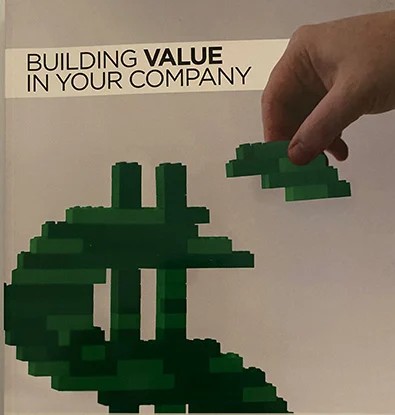The Silent Killer of Business Value: The Key Person Dependency

Erika Baez-Grimes
Business Coach Certified Mergers & Acquisitions Professional
The BPH Group, LLC
Erika@TheBPHGroup.Com
When business owners think about building value in their company, they often focus on increasing revenue, improving margins, adding services, or acquiring more customers. While these are essential, there’s a quieter, often unspoken factor that can dramatically reduce a company’s worth in the eyes of a buyer—key person dependency.
Whether you’re planning to exit in the next year or the next decade, this one issue can derail your best-laid plans and leave serious money on the table.
***DON’T BE THE STAR OF THE SHOW***

What Is Key Person Dependency, Really?
Key person dependency occurs when a business relies too heavily on one individual—often the owner, but sometimes a top salesperson, the operations manager, a lead technician, or a long-time employee. These individuals hold so much institutional knowledge or client goodwill that the business would struggle—or even fail—without them.
Most often, that key person is the founder or owner. They’re the rainmaker, the problem-solver, the strategic brain, and the brand all rolled into one. While that might be perceived as “strong” for an operator, it translates into a weak investment.
Why Most Buyers Walk Away from Key Person Businesses
Buyers aren’t just purchasing your past success—they’re buying your business’s ability to thrive without you. If a prospective buyer believes that your departure will cause customers to leave, sales to decline, or chaos to ensue, they’ll either lower their offer dramatically or walk away entirely.
In due diligence, buyers ask questions like
- “Who handles your top 10 clients?”
- “What happens if this person leaves?”
- “Can the company maintain performance during a six-month transition?”
- “Are processes well documented?”
If the answers hinge on one or two individuals, red flags go up.


The Tangible Impact on Valuation: Businesses with high dependency often experience
Narrower buyer pools—especially for first-time or strategic buyers who want turnkey operations.
Lower EBITDA multiples—because future earnings are uncertain.
Contingent deal structures—such as earn-outs or seller financing—to mitigate risk.
Prolonged transition demands—where the owner must stay longer than anticipated.
How to Diagnose and Reduce Dependency: Good news, key person dependency is both common and fixable—but it requires proactive planning. Start by asking yourself the following:
- If I stepped away for 90 days, could the business run smoothly without me?
- Are client relationships centralized around me or my team?
- Do I make most of the key decisions, or are there empowered leaders?
Once diagnosed, the value gaps can be addressed. Remember, A Resilient Business Is a Valuable Business and reducing key person risk doesn’t just position you for a better exit—it strengthens your business today. You’ll reduce stress, improve delegation, and, in most cases, build something that can weather personal emergencies, employee departures, or growth surges.
Most importantly, you’ll make your business attractive and investable—two key ingredients for a successful sale.
If you’d like to discuss the pathway to untangle the KEY PERSON visit www.NovaBusinessInquiry.com or contact Erika Baez-Grimes, Certified Mergers & Acquisitions Advisor at Erika@TheBPHGroup.Com or 804.750.3008


